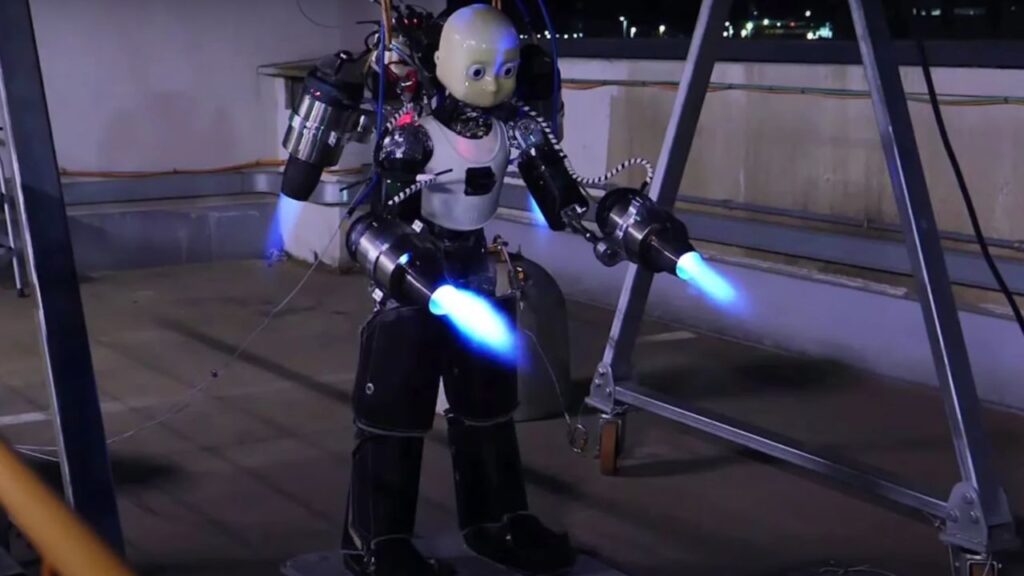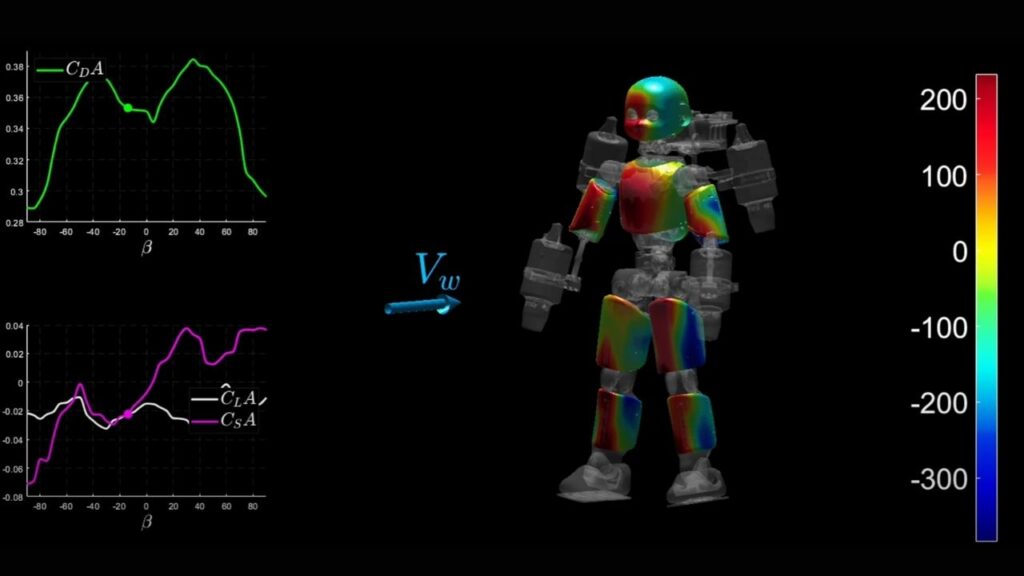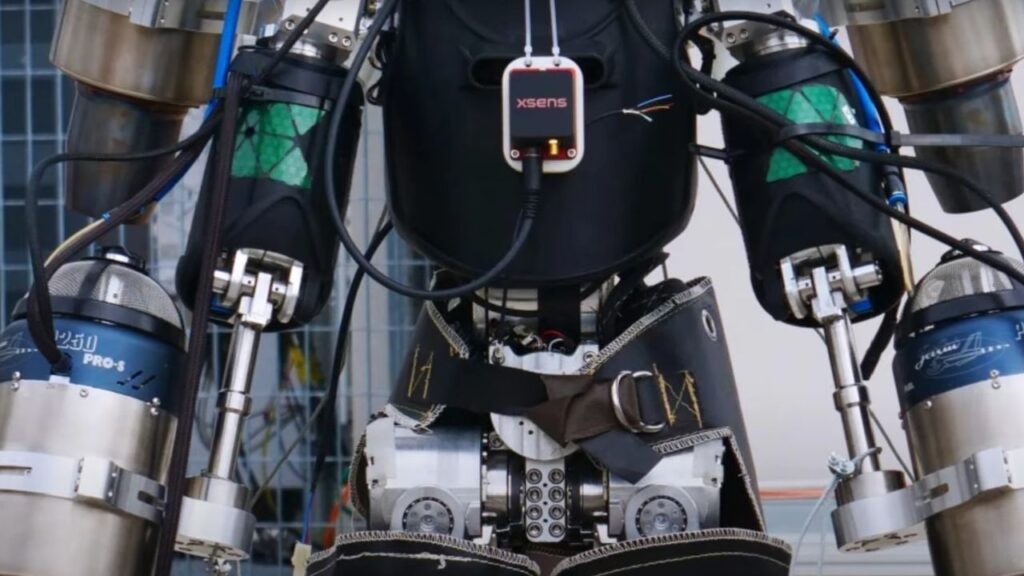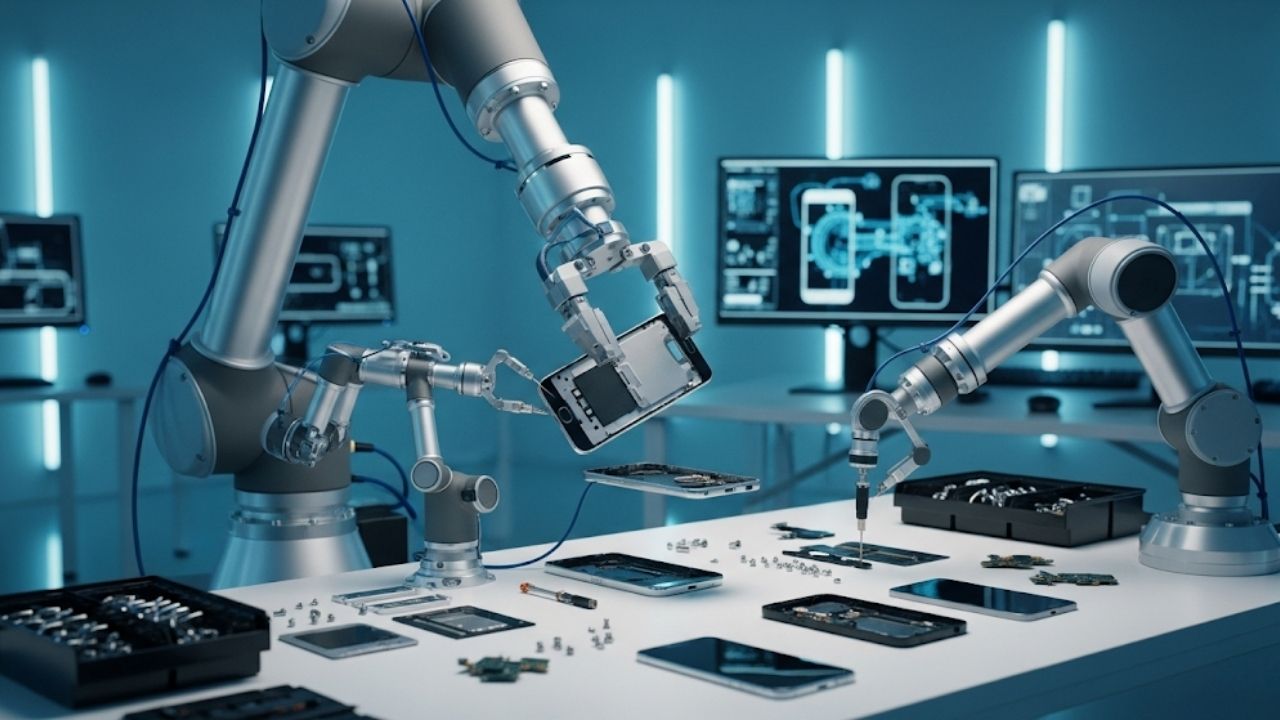First Jet-Propelled Humanoid Robot With Controlled Flight: Imagine a robot that can not only walk like a human but also soar through the air like a superhero. This isn’t science fiction anymore—engineers have just tested the world’s first jet-propelled humanoid robot with controlled flight, marking a major leap forward in robotics and artificial intelligence. The robot, named iRonCub3, has successfully lifted off the ground, hovered in mid-air, and maintained balance, all while being guided by advanced AI and powerful jet engines.

In this article, we’ll break down what makes iRonCub3 so special, how it works, and why this breakthrough matters for the future of technology, rescue missions, and more. Whether you’re a curious student, a robotics enthusiast, or a professional in the field, you’ll find practical insights, clear explanations, and expert analysis to help you understand this exciting innovation.
First Jet-Propelled Humanoid Robot With Controlled Flight
| Feature/Fact | Details & Data |
|---|---|
| Robot Name | iRonCub3 |
| Developer | Italian Institute of Technology (IIT) |
| Weight | 70 kg (154 lbs) |
| Height | ~1 meter (3 feet) |
| Propulsion | 4 jet engines (2 on arms, 2 on back) |
| Max Thrust | Over 1000 Newtons (N) |
| Exhaust Temperature | Up to 800°C (1,472°F) |
| Material | Titanium spine, heat-resistant covers |
| Control System | Advanced AI, neural networks, real-time multi-rate control |
| Flight Test Result | Hovered 50 cm (1.5 feet) off ground, maintained stability in wind |
| Potential Applications | Search and rescue, hazardous inspection, exploration |
| Collaborators | IIT, Politecnico di Milano, Stanford University |
| Official Website | IIT – Italian Institute of Technology |
The successful test of the first jet-propelled humanoid robot with controlled flight signals a new era in robotics. By blending advanced AI, powerful jet engines, and human-like movement, iRonCub3 opens the door to robots that can go where no machine—or person—has gone before. Whether for rescue missions, industrial inspection, or future research, this technology is set to change what we expect from robots in the real world.
What Is iRonCub3? The World’s First Jet-Powered Humanoid Robot
iRonCub3 is a humanoid robot—meaning it looks and moves like a human—that has been equipped with four powerful jet engines. These engines allow it to lift off the ground, hover, and potentially fly over obstacles or into dangerous places where humans can’t safely go.
Key Features:
- Jet Engines: Two on the arms, two on the back, providing over 1000 N of thrust.
- Titanium Spine & Heat Shields: Protects the robot from extreme heat (up to 800°C) generated by the engines.
- AI-Powered Control: Advanced neural networks and real-time controllers keep the robot balanced and stable, even when wind or movement shifts its weight.
- Human-Like Limbs: Unlike drones, iRonCub3 has arms and legs that move, making flight control much more complex.
This robot is not just a flying machine—it’s a testbed for the next generation of multimodal robotics, combining walking, climbing, and flying in one intelligent, adaptable platform.
How Does iRonCub3 Work? Breaking Down the Technology
1. Propulsion: Jet Engines for Lift and Control
Most flying robots use spinning propellers like drones. iRonCub3, however, uses miniature jet turbines—the same basic technology found in real jetpacks or small aircraft. These engines are:
- Mounted on the robot’s arms and a backpack-like unit.
- Capable of blasting hot air at nearly the speed of sound, generating enough force to lift the 70 kg robot into the air.

Example:
If you’ve seen Iron Man in the movies, imagine a smaller, real-life version using similar technology to hover and move around.
2. Advanced Materials: Titanium and Heat Shields
Flying with jets is hot business! The exhaust can reach temperatures of 800°C—hot enough to melt many metals. To survive, iRonCub3 uses:
- A titanium spine for strength and heat resistance.
- Special covers and shields to protect its electronics and joints from the extreme heat.

3. Control System: AI and Real-Time Feedback
Unlike simple drones, a humanoid robot’s moving arms and legs constantly change its balance and aerodynamics. To keep iRonCub3 stable:
- Engineers developed neural networks (a type of artificial intelligence) trained on both computer simulations and real-world flight data.
- The robot uses real-time sensors to measure its position, speed, and the forces acting on it.
- A multi-rate control system combines slow, precise movements (like bending an arm) with fast, powerful jet adjustments.
Example:
If a gust of wind pushes the robot, the AI instantly tweaks the jet engines and limb positions to keep it upright—like a tightrope walker using a balancing pole.
4. Testing and Validation: Simulations, Wind Tunnels, and Real Flights
Before the first real flight, the iRonCub3 team:
- Ran computer simulations using Computational Fluid Dynamics (CFD) to model how air flows around the robot.
- Tested prototypes in wind tunnels to see how they handled turbulence and sudden gusts.
- Used deep learning to improve flight stability and control, based on thousands of simulated and real test runs.
Why Is This Breakthrough Important? Real-World Applications
1. Search and Rescue Missions
Robots like iRonCub3 could fly into disaster zones, collapsed buildings, or hazardous areas where humans or wheeled robots can’t go safely. They could:
- Hover over rubble to search for survivors.
- Deliver supplies to trapped people.
- Inspect dangerous sites after fires, earthquakes, or chemical spills.
2. Industrial and Scientific Exploration
In places like nuclear plants, oil rigs, or remote research stations, a robot that can both walk and fly could:
- Inspect equipment high above the ground.
- Enter tight or dangerous spaces.
- Collect samples or data in extreme environments.
3. Advancing Robotics and AI
By solving the complex challenges of humanoid flight, engineers are pushing the boundaries of what robots can do. The lessons learned from iRonCub3 will help:
- Improve AI for balancing and movement.
- Develop better materials and control systems for future robots.
- Open new possibilities for robots in medicine, construction, and everyday life.
Practical Advice: What This Means for Students, Engineers, and Businesses
For Students:
If you’re interested in robotics, now is a great time to learn about AI, mechanical engineering, and aerodynamics. These fields are coming together in exciting ways, and future jobs will need people who understand all three.
For Engineers:
The iRonCub3 project highlights the importance of multidisciplinary teams—combining robotics, software, materials science, and control systems. Real-world testing and simulation are both crucial for success.
For Businesses:
Companies in logistics, emergency response, and industrial inspection should watch these developments closely. Humanoid robots with flying ability could soon offer new solutions for hard-to-reach or dangerous tasks.
Quantum Experiments Confirm Indefinite Causal Order, Independent of Devices
Smart Windows That Automatically Adjust Temperature Could Revolutionize Indoor Comfort
FAQs About First Jet-Propelled Humanoid Robot With Controlled Flight
Q1: How high can iRonCub3 fly?
Currently, iRonCub3 has hovered about 50 cm (1.5 feet) off the ground during tests. As the technology improves, higher and longer flights are expected.
Q2: Is iRonCub3 controlled by a human or fully autonomous?
The robot is teleoperated (controlled by a human operator) but uses advanced AI and neural networks to maintain balance and stability in real time.
Q3: What makes iRonCub3 different from drones?
Unlike drones, iRonCub3 has a humanoid shape with arms and legs, making flight control much more complex. It’s designed to combine walking, climbing, and flying in one platform.
Q4: What are the safety challenges?
Flying robots with jet engines are dangerous—hot exhaust, high speeds, and complex controls mean safety is a top priority. The iRonCub3 team uses special test areas and strict protocols to prevent accidents.










